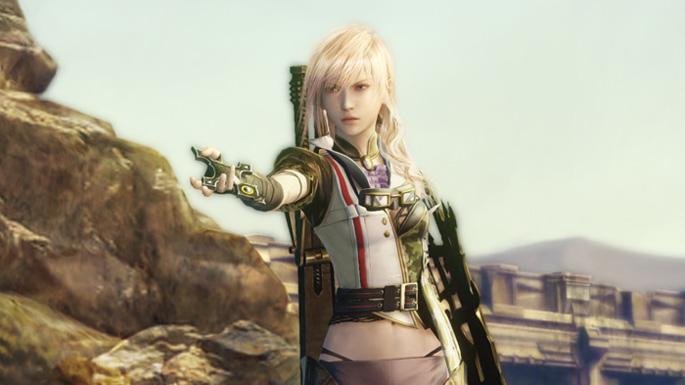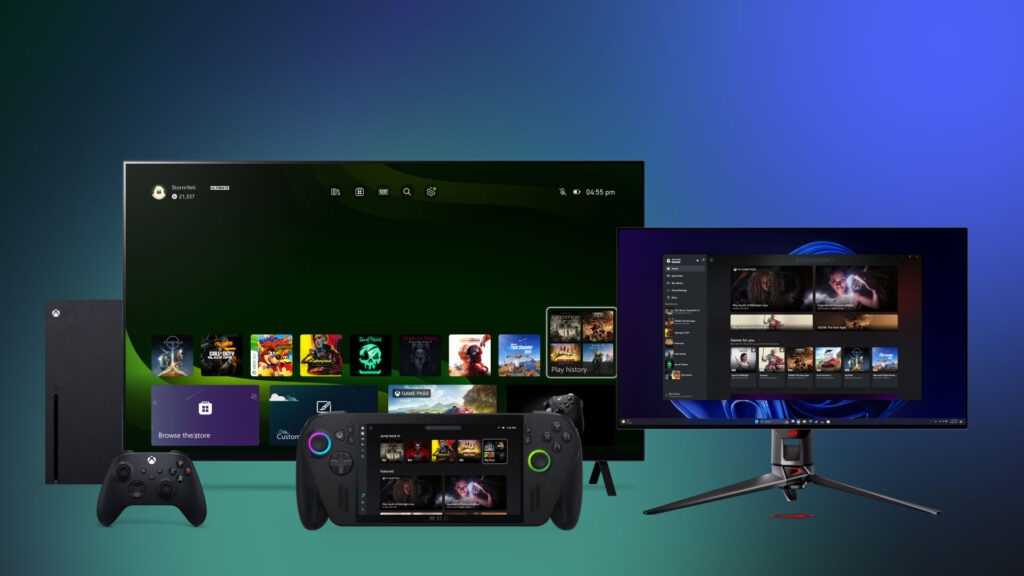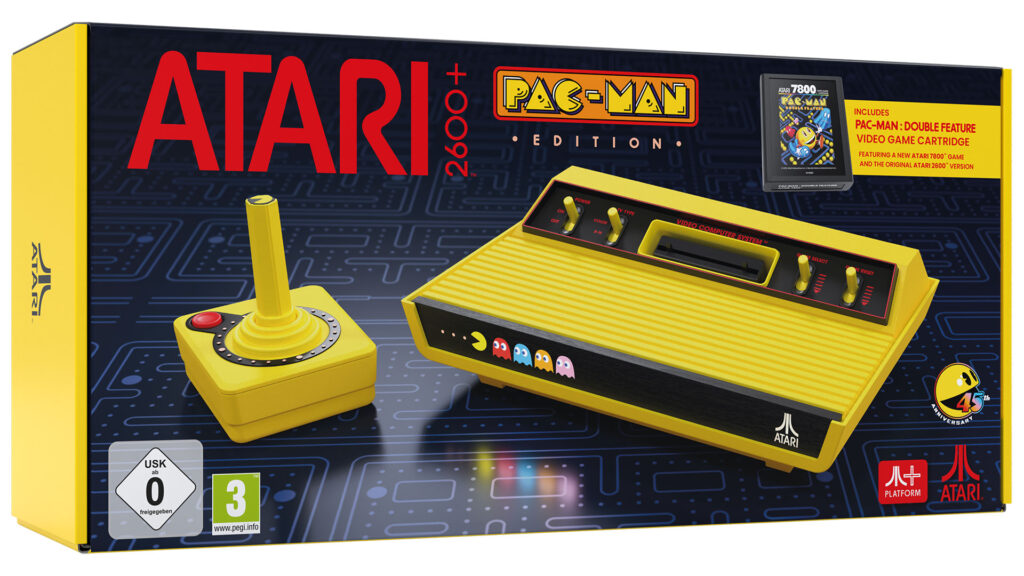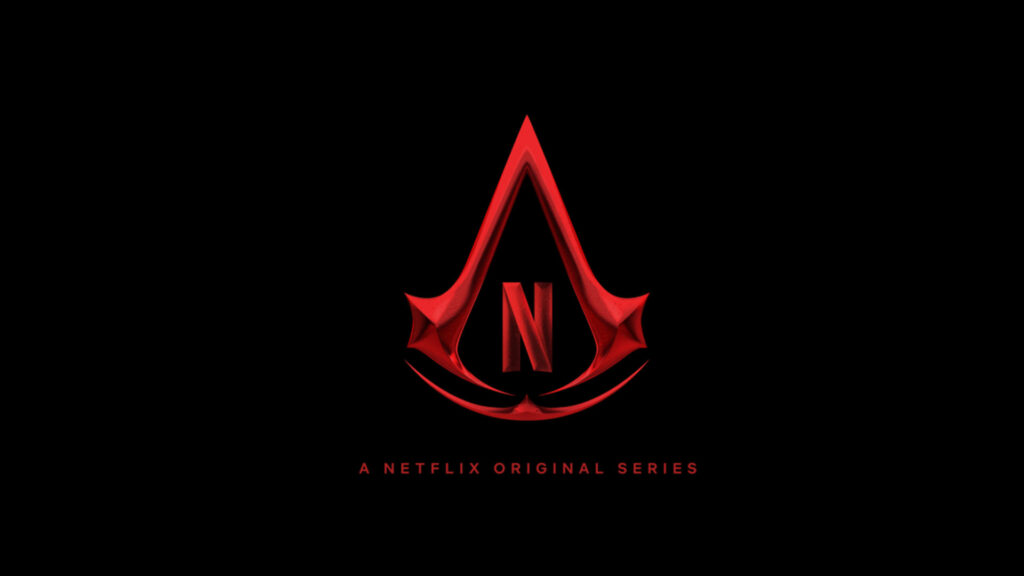On March 9, 2010, Square Enix released Final Fantasy XIII in North America, the first game in the series to feature full high-definition graphics to usher in a new era of Final Fantasy games. When the Fabula Nova Crystallis collection of games was first announced in 2006, gamers were supposed to get a trio of titles: Final Fantasy XIII, Final Fantasy Versus XIII and Final Fantasy Agito XIII. Instead, Final Fantasy Versus XIII became Final Fantasy XV, and Final Fantasy Agito XIII went from a mobile game to Final Fantasy Type-0 on the PSP – with no North American release in sight. But it appeared that Square Enix had its mind set on creating a trilogy out of the Final Fantasy XIII name regardless, giving us three games revolving around the same cast of characters for the first time in the series’ history.
Less than four years after the original Final Fantasy XIII was released, Lightning Returns: Final Fantasy XIII arrived for the Xbox 360 and PlayStation 3 on February 11, 2014. It’s hard to say that Lightning Returns is a great game, but at the same time, it’s not easy to say that it’s a bad game. The biggest problem with Lightning Returns is that it doesn’t feel like a Final Fantasy game, and that’s not a good thing.
As with all reviews, we try to keep them spoiler free, but with a game like Lightning Returns they’re hard to avoid in order to give it a proper and meaningful review. So proceed with caution, though we did try our best to not ruin anything pivotal to the plot.
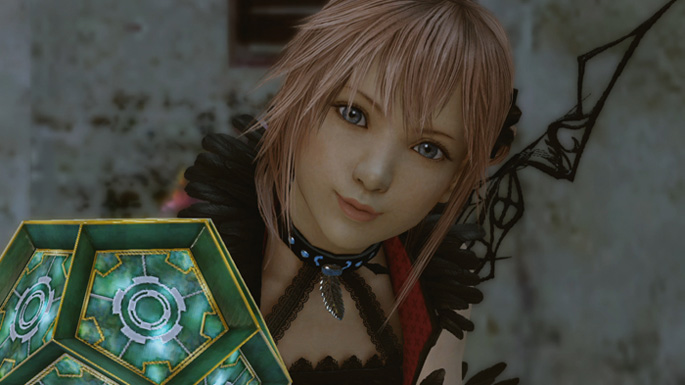
Lumina is one of the bright spots of Lightning Returns, a character with a likeable personality and full of charm
Lightning Returns starts off with the world ending in 13 days and our heroine appearing in a land that’s foreign from the previous two games in the series. Without hesitation, the game begins by re-introducing a familiar face to players while quickly introducing a new one: Lumina. Lumina sports the same rose-colored hair as Lightning, and it’s hardly a coincidence that she resembles Lightning’s sister, Serah. Square Enix went out of their way to make players curious about Lumina’s origins and the role she plays in Lightning Returns, making appearances at every plot point in the game. In fact, Lumina is one of the bright spots of Lightning Returns, a character that’s filled with the charisma and personality you’d expect from a Final Fantasy game.
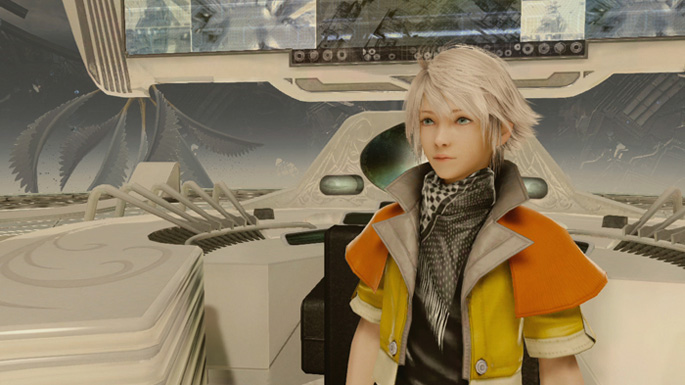
Hey, it’s Hope! …And he’s young again.
After the opening cutscene, Lightning is reunited with Hope, another returning character from the previous games. This time around however, Hope has mysteriously reverted to his younger self – not the older version that Serah and Noel sees in Final Fantasy XIII-2. Ironically, Hope is just as confused as you are as to why he’s his younger self. From there, players enter Luxerion and are introduced to the core of Lightning Returns’ gameplay of saving souls by completing quests, all the while of seeing old friends from the past two games.

Exploring the Dead Dunes with Fang in your party is one of the more enjoyable segments in Lightning Returns
Considering 500 years have passed since the events of Final Fantasy XIII-2, it’s almost understandable that some of the characters aren’t thrilled to see Lightning return. In fact, some of the meetings with previous characters of the trilogy fall flat on their face, offering an anti-climactic cutscene that is disappointing at best. You would think after not seeing Lightning for over 500 years, some of the characters would be a little more shocked than they appear. Fortunately, that’s not the case with all of the characters players run into from the past games. When Lightning is reunited with Fang, players will actually gain a party member for a good bulk of the Dead Dunes world, with plenty of conversing back and forth between the two characters. Those scenes not only remind players why Fang was one of the more liked characters from the previous games, but also builds Lightning’s personality into a more likeable character. It’s simply tragic that Square Enix didn’t take advantage of that formula and doing the same with all the other characters like Snow, Sazh and Vanille.
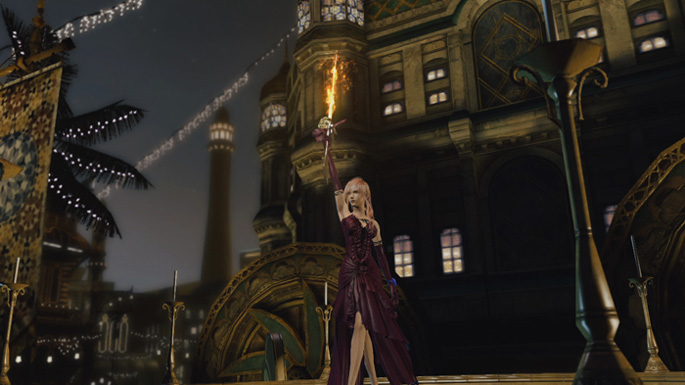
Watching Lightning twirl in circles while wearing a prom dress is as silly as it sounds
Unfortunately, Lightning’s overall development as a character continues to fall awkwardly in place with dry humor and remarks that seem unfitting for our heroine. And while the Final Fantasy series is well known for their memorable cutscenes that make your jaw drop in disbelief – Aerith’s death in Final Fantasy VII for example – you’ll get the same effect from cutscenes in Lighting Returns but for all the wrong reasons. Something about Lightning dancing in circles on a stage while wearing a fancy prom dress falls more in the silly category than the memorable one. What’s worse are certain cutscenes that are tough to take seriously when half of Lightning’s augmented breasts are hanging out, thanks to the ridiculous costume that she’s wearing.
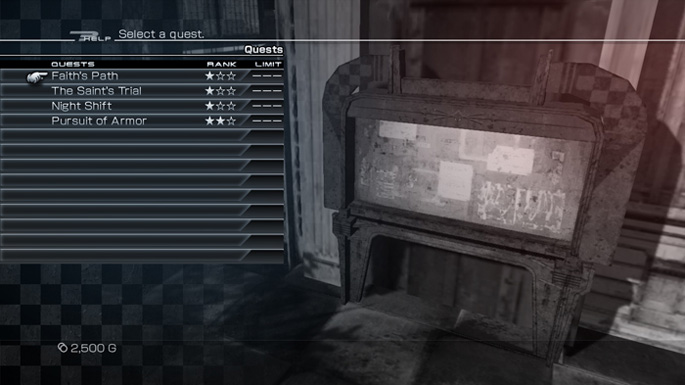
You’ll have to do quests to make Lightning more powerful, it’s a shame many of them are meaningless
But the most glaring problem with Lightning Returns is how much Square Enix tried to change the formula with the game but ultimately ends up with the same result, except with some major inconveniences. To start off, Lightning doesn’t level up in the traditional sense; in fact, her character doesn’t even have a level. Instead, players are forced to level up skills through an archaic system of paying gil and combining them to increase their attributes. In order to level up those skills, they’ll have to grind mobs for the skills to drop as items. In order to increase Lightning’s stats of strength, magic and hit points, players will have to complete side quests. So technically speaking, the end result is the same as a traditional Final Fantasy game where players complete quests while fighting monsters to become more powerful, except they’ll be forced to stop by a shop in order to do so. Perhaps that’s Square Enix’s way to mock the criticism it received from the lack of stores in the original Final Fantasy XIII. The biggest issue with the system is that players don’t have the satisfaction of knowing that they leveled up their character, a psychological aspect of what makes RPGs so enjoyable to begin with. There is also little to no indication if you’re strong enough to progress in the game, leaving you wondering whether or not you have to finish up some side quests to be stronger.
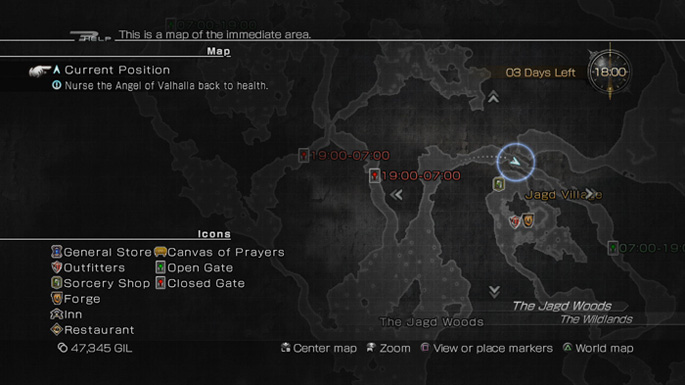
Some areas in Lightning Returns are only accessible at certain times of the day
Which now brings up the mechanic of the running clock in Lightning Returns. While initially players will feel that the clock is stressful, constantly ticking down and reminding them that the world is coming to an end, the mechanic becomes a moot point with the Chronostasis skill. Rather than making it meaningful and forcing players to make calculated decisions as to what quests to complete, the clock merely becomes an inconvenience once you realize you can spam the Chronostasis skill to stop time. Replenishing your EP in order to use Chronostasis repeatedly is as simple as fighting monsters, which is the main way to gather up the skills you need to level up anyways. As a result, the clock simply becomes a barricade for players, forcing them to stand around until a certain hour ticks by in order to progress through a quest or explore a dungeon.
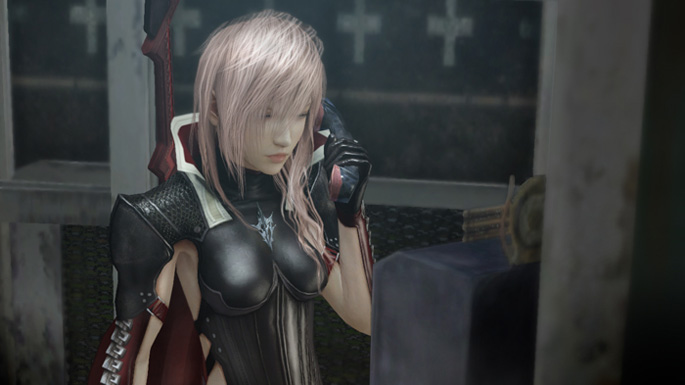
Hello? Can you give me something meaningful to do?
As for the side quests themselves, they offer very little to the game, and actually transforms Lightning Returns into feeling like a poorly-made single-player MMORPG. Many of the quests lack substance and hardly make you feel like you’re the savior in a world that’s about to end. Having to check 13 clocks on a large map in order to save a person’s soul isn’t fulfilling. And some of the side quests just get worse, like having to chase back three sheeps that are just a few feet out from their pen. It leaves the player feeling like Lightning’s journey is one that’s mostly meaningless, when there was an opportunity to make Lightning a sympathetic and loving character.
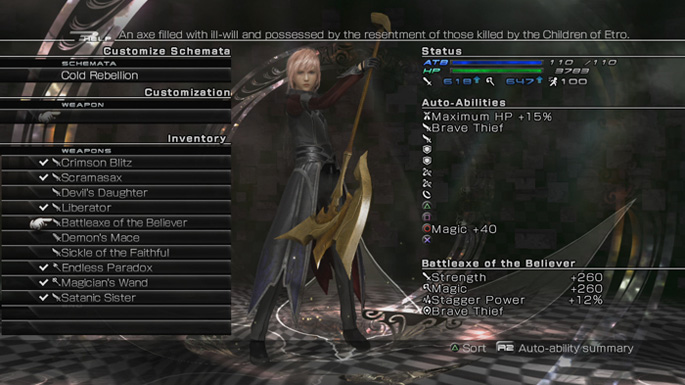
The Schemata system allows you to customize Lightning to your heart’s content
By the time one finishes Lightning Returns, you can’t help but feel like the game was full of great ideas that were all poorly executed. Sure, the team at Square Enix does their best in addressing all the issues and faults from the first two games, but they do it in a way that’s not impactful. Making a game open world for the sake of having a large open world is meaningless if it’s not filled with content. Thankfully, the battle system has evolved from the first and second iterations into a system that’s not only versatile, but really fun and active. Players can spend hours perfecting their schematas in order to succeed in tough battles, which is a necessity if they plan on playing it on Normal or Hard difficulty (which unlocks after you beat the game). The problem is, Lightning Returns doesn’t give you a very good reason to play through the game more than once unless you’re looking for a challenge.
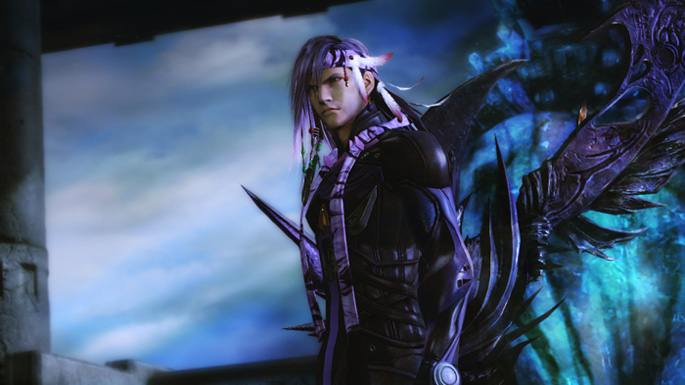
Is there ultimately a happy ending for Caius?
Now while this review might seem overwhelmingly negative, it doesn’t mean that Lightning Returns isn’t worth a play through if you’ve invested the time into the previous two. Experienced players will be able to reach the end of the game simply by completing the main quests, especially on easy mode, which means they can avoid the vast majority of the side quests if they’re just interested in reaching the conclusion of the trilogy’s storyline. In a way, Lightning Returns was created to appeal to completionists, in addition to players that simply want to revisit old friends from Final Fantasy XIII and see the story to the end.

Even Snow’s deep in thought wondering if Lightning Returns is worth playing
But is Lightning Returns a journey worth taking? If you’re a fan of the previous two games, then you’ll find yourself right at home with Lightning Returns even though there’s numerous changes to Final Fantasy’s core mechanics. Despite its shortcomings, I enjoyed my time with Lightning Returns and the Final Fantasy XIII trilogy, but it still lacks the memorable experiences and touching moments the series is well known for. Truthfully, you’ll want to venture into Lightning Returns with a light heart, cracking a smile rather than a look of disgust when Lightning spouts off phrases like “destiny is destiny.” In a way though, Lightning Returns is like the end of a bad relationship: For some strange reason, you just need to have closure, no matter how painful it might be.

